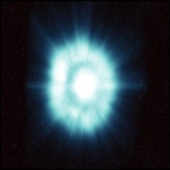ESA Science & Technology - News Archive
News archive
News archive
Published: 20 May 2003
Published: 20 May 2003
Published: 9 May 2003
Published: 5 May 2003
Published: 1 May 2003
Published: 1 May 2003
Published: 30 April 2003
Published: 24 April 2003
Published: 23 April 2003
Published: 16 April 2003
Published: 8 April 2003
Published: 8 April 2003
Published: 1 April 2003
Published: 25 March 2003
Published: 23 March 2003
Published: 20 March 2003
Published: 18 March 2003
Published: 13 March 2003
Using the Hubble Space Telescope, for the first time, astronomers have observed the atmosphere of an extrasolar planet evaporating off into space. Much of this planet may eventually disappear, leaving only a dense core. The planet is a type of extrasolar planet known as a 'hot Jupiter'. These giant, gaseous planets orbit their stars very...
Published: 11 March 2003
Published: 11 March 2003
—
20 Items per Page




















